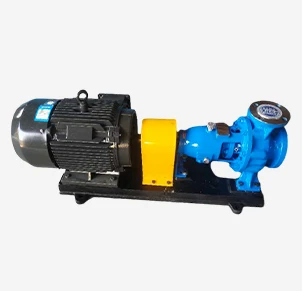English
- Afrikaans
- Albanian
- Amharic
- Arabic
- Armenian
- Azerbaijani
- Basque
- Belarusian
- Bengali
- Bosnian
- Bulgarian
- Catalan
- Cebuano
- Corsican
- Croatian
- Czech
- Danish
- Dutch
- English
- Esperanto
- Estonian
- Finnish
- French
- Frisian
- Galician
- Georgian
- German
- Greek
- Gujarati
- Haitian Creole
- hausa
- hawaiian
- Hebrew
- Hindi
- Miao
- Hungarian
- Icelandic
- igbo
- Indonesian
- irish
- Italian
- Japanese
- Javanese
- Kannada
- kazakh
- Khmer
- Rwandese
- Korean
- Kurdish
- Kyrgyz
- Lao
- Latin
- Latvian
- Lithuanian
- Luxembourgish
- Macedonian
- Malgashi
- Malay
- Malayalam
- Maltese
- Maori
- Marathi
- Mongolian
- Myanmar
- Nepali
- Norwegian
- Norwegian
- Occitan
- Pashto
- Persian
- Polish
- Portuguese
- Punjabi
- Romanian
- Russian
- Samoan
- Scottish Gaelic
- Serbian
- Sesotho
- Shona
- Sindhi
- Sinhala
- Slovak
- Slovenian
- Somali
- Spanish
- Sundanese
- Swahili
- Swedish
- Tagalog
- Tajik
- Tamil
- Tatar
- Telugu
- Thai
- Turkish
- Turkmen
- Ukrainian
- Urdu
- Uighur
- Uzbek
- Vietnamese
- Welsh
- Bantu
- Yiddish
- Yoruba
- Zulu
Telephone: +86 13120555503
Email: frank@cypump.com
Oct . 21, 2024 10:07 Back to list
Optimizing Performance of Froth Slurry Pumps for Enhanced Mining Efficiency and Reliability
Understanding Froth Slurry Pumps A Comprehensive Overview
Froth slurry pumps play a crucial role in various industrial applications, particularly in the mining and mineral processing industries. These pumps are specifically designed to handle complex slurry mixtures that consist of solids, liquids, and froth, providing an efficient means to transport materials through different stages of processing. In this article, we delve into the operation, design, applications, and maintenance considerations for froth slurry pumps.
What is a Froth Slurry?
Before understanding froth slurry pumps, it's essential to define what a froth slurry is. A froth slurry typically contains a mixture of fine particles and air bubbles, resulting from processes like flotation in mineral extraction. The frothy top layer consists of valuable minerals, while the underlying layer usually contains gangue or waste material. Managing these slurries is critical, as improper handling can lead to inefficiencies in recovery and increased operational costs.
Design and Operation of Froth Slurry Pumps
Froth slurry pumps are ingeniously engineered for specific types of slurry with high viscosity and low density. Unlike conventional pumps, froth slurry pumps are designed to handle the unique challenges posed by air-entrained slurries. Key design features often include
1. Enhanced Impeller Design These pumps utilize specialized impeller designs that can effectively manage the frothy material. The impeller's geometry helps in reducing the entrapment of air, ensuring a more consistent flow of slurry.
2. Heavy-Duty Construction Froth slurry pumps are constructed from robust materials to withstand the wear and tear that comes from handling abrasive slurries. Common materials include high-chrome alloys designed to resist corrosion and erosion.
3. Self-Priming Capabilities Many froth slurry pumps offer self-priming capabilities, allowing them to start and operate efficiently even when the pump chamber is not filled with slurry. This feature minimizes downtime and is essential for continuous processing applications.
Applications of Froth Slurry Pumps
Froth slurry pumps find extensive use in a variety of industries. Some prominent applications include
froth slurry pump

- Mineral Processing In mining operations, these pumps transport frothy concentrates from flotation cells to thickeners and other separation processes. - Coal Handling Froth slurry pumps are utilized in coal preparation plants to handle the slurries generated during cleaning and processing.
- Sewage Treatment Certain wastewater treatment facilities employ froth slurry pumps for handling sludge and other frothy mixtures resulting from treatment processes.
- Food Industry These pumps can also be found in specific food processing applications where frothy materials need to be transported efficiently.
Maintenance Considerations
Regular maintenance of froth slurry pumps is crucial to ensure their longevity and reliability. Here are some best practices
- Routine Inspections Conduct frequent inspections to identify wear and replace components like liners and impellers as needed.
- Seal and Bearing Maintenance Check seals and bearings regularly for wear, and ensure they are lubricated properly to prevent leaks and overheating.
- Monitor Performance Keep an eye on performance metrics such as flow rates, pressure, and energy consumption to detect any potential operational issues early.
- Cleaning Regularly clean the pump to prevent build-up of slurries, which can affect performance and lead to corrosion.
Conclusion
Froth slurry pumps are indispensable tools in industries that deal with frothy slurries. Their unique design and operational capabilities allow for efficient material handling, ultimately leading to improved recovery rates and lower operational costs. By adhering to proper maintenance practices, operators can optimize the performance and longevity of these pumps, ensuring their continued contribution to industrial processes. As technology continues to advance, froth slurry pumps are expected to evolve further, enhancing their effectiveness and sustainability within various applications.
-
ISG Series Pipeline Pump - Chi Yuan Pumps | High Efficiency, Durable Design
NewsAug.01,2025
-
Advanced Flue Gas Desulfurization Pump with GPT-4 Turbo | Durable & Efficient
NewsJul.31,2025
-
ISG Series Vertical Pipeline Pump - Chi Yuan Pumps | Advanced Hydraulic Design&Durable Construction
NewsJul.31,2025
-
ISG Series Vertical Pipeline Pump - Chi Yuan Pumps | Energy Efficient & Low Noise
NewsJul.31,2025
-
pipeline pump - Chi Yuan Pumps Co., LTD.|High Efficiency&Low Noise
NewsJul.31,2025
-
ISG Series Vertical Pipeline Pump - Chi Yuan Pumps Co., LTD.|High Efficiency, Energy Saving, Low Noise
NewsJul.30,2025










